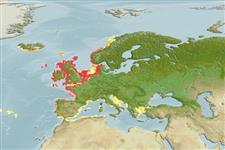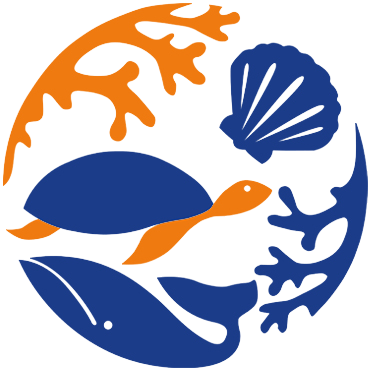Acrocnida brachiata (Montagu, 1804)
Sand burrowing brittle star| Native range | All suitable habitat | Point map | Year 2050 |

|
| This map was computer-generated and has not yet been reviewed. |
| Acrocnida brachiata AquaMaps Data sources: GBIF OBIS |
Google image |
No photo available for this species.
Classification / Names आम नाम | उपशब्द | CoL | ITIS | WoRMS
Ophiuroidea | Amphilepidida | Amphiuridae
Environment: milieu / climate zone / गहराई सीमा / distribution range पारिस्थितिकी
; खारा; गहराई सीमा 5 - 40 m (संदर्भ 85345). Temperate
Distribution देश | ऐफ ऐ ओ क्षेत्र | Ecosystems | संयोग | भूमिका
Atlantic and the Mediterranean Sea: Europe & Northern Asia (excluding China). Temperate and subtropical.
Length at first maturity / आकार / Weight / Age
परिपक्व अवधि: Lm ? range ? - ? cm
Life cycle and mating behavior परिपक्व अवधि | पुनरुत्पत्ति | मछलीऔ का अंडे देना | Eggs | Fecundity | Larvae
Main reference
संदर्भ | संयोजक | सहयोगीयो
Garmendia, J.M., J.M. Parada and J. Mora. 2003. (संदर्भ 2795)
IUCN Red List Status
(संदर्भ 130435: Version 2024-2)
CITES status (संदर्भ 108899)
CMS (संदर्भ 116361)
Threat to humans
Human uses
| FishSource |
साधन
अधिक जानकारी
इंटरनेट स्रोत
BHL | BOLD Systems | CISTI | DiscoverLife | FAO(Publication : search) | Fishipedia | GenBank (genome, nucleotide) | GloBI | Gomexsi | Google Books | Google Scholar | Google | PubMed | Tree of Life | Wikipedia (Go, खोज) | Zoological Record


